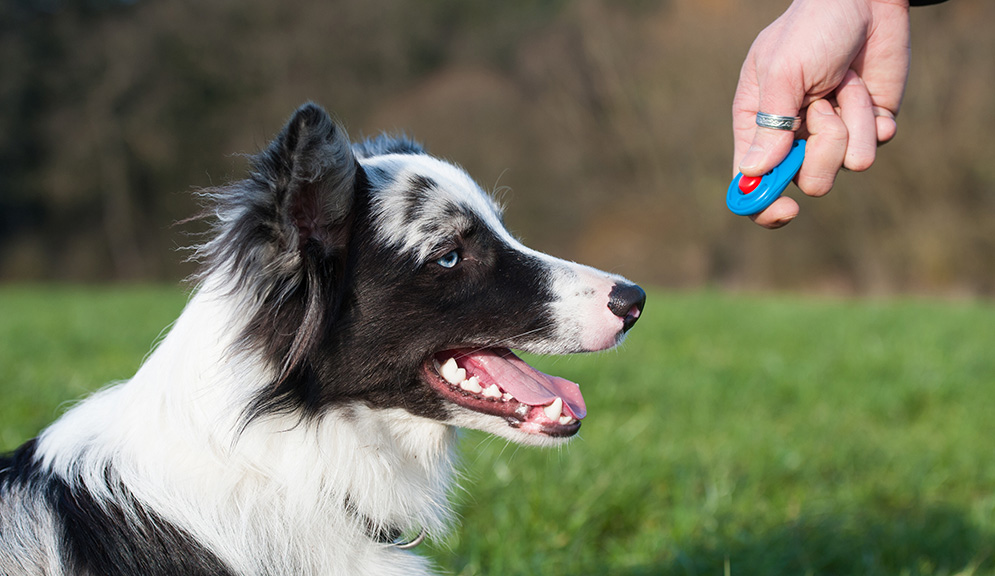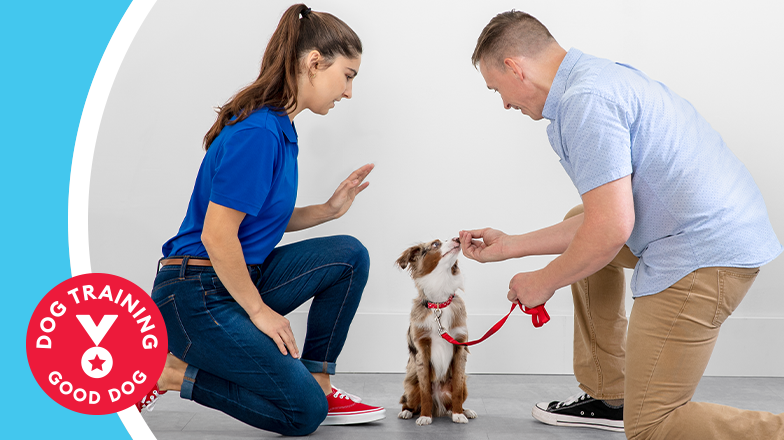The Role of Socialization in Dog Training for Better Behavior
The Role of Socialization in Dog Training for Better Behavior
Blog Article
Novice's Guide to Successful Pet Dog Training at Home
Effectively educating a pet at home needs a nuanced understanding of canine actions and reliable interaction techniques. Establishing clear training goals, making use of top notch rewards, and keeping uniformity throughout relative are critical components. In addition, integrating training into everyday routines can boost both interaction and retention. However, numerous newbie fitness instructors encounter difficulties that may hinder development. To browse these intricacies properly, it's vital to check out numerous crucial elements that can transform your strategy and result in a harmonious connection with your pet dog. What essential concepts should every beginner grasp to ensure success?
Understanding Pet Habits
Recognizing canine actions is vital for effective training and promoting a harmonious connection between humans and their canine buddies. Canines communicate largely via body movement, vocalizations, and faces, making it important for proprietors to analyze these signals precisely. Acknowledging actions such as tail wagging, grumbling, or shrinking can provide insights into a pet dog's emotion and intentions.

Common behavioral problems, such as aggressiveness, anxiety, or extreme barking, commonly stem from misunderstandings or unmet requirements. Observing and resolving these problems immediately can prevent rise and make certain a favorable training experience. By promoting a deep understanding of dog habits, owners can customize their training methods to fit their canine companions, ultimately bring about a well-behaved and satisfied pet dog.
Essential Educating Tools
A well-equipped training space can significantly boost the efficiency of canine training in your home. Vital training devices make certain that both the canine and the fitness instructor can participate in efficient sessions that promote understanding and bonding.

Purchasing a tough chain and a comfortable, well-fitting collar or harness is essential for safety and security and control. These tools aid establish borders and make sure the pet dog stays safe and secure throughout training. Furthermore, a designated training location, totally free from distractions, help concentration for both the fitness instructor and the dog.
Training help such as training pads, cones, or agility equipment can additionally improve the experience by presenting range and difficulties. Having a notebook or electronic app for tracking development can be very useful, allowing you to note successes and areas for renovation. Utilizing these essential tools will produce a favorable training atmosphere and lay the foundation for efficient knowing.
Producing a Training Routine
Developing a regular training regimen is necessary for effective canine training in your home. A well-structured regular not just helps in strengthening preferred actions yet likewise supplies your pet with a complacency and predictability. To develop an effective training routine, start by identifying certain training objectives, such as basic commands, leash strolling, or house-training.
Choose a designated time each day for training sessions, ideally when your canine is receptive and alert. Procedure must be brief, about 5 to 15 mins, to keep emphasis and protect against exhaustion. Uniformity in timing and setting will boost your pet's learning experience.
Include training right into daily activities to reinforce skills. Method commands throughout walks or mealtime, which integrates learning right into natural regimens. In addition, continue to be versatile and change the regular as needed, fitting your canine's power degrees and mood.
Positive Support Strategies
Favorable support methods are fundamental to reliable pet dog training, promoting wanted habits with rewards as opposed to punishment. This approach utilizes favorable stimulations, such as treats, praise, or play, to encourage dogs to duplicate particular activities. The foundation of this approach is timing; rewards must be provided immediately following the desired habits to create a clear organization.
When implementing favorable support, it is vital to pick benefits that are encouraging for your pet. High-value treats, such as little items of poultry or cheese, can be particularly reliable throughout training sessions. In addition, differing the rewards can keep your pet dog's passion and interest.
Beginning with basic commands, like "sit" or "remain," and progressively development to extra intricate tasks. Consistency is essential; ensure that all member of the family make use of the same commands and benefit systems to stay clear of complication.
Moreover, it is essential to continue to be client and stay clear of stress. Canines, like people, find out at their Related Site own speed. By cultivating a supportive training setting via positive support, you can improve your pet's knowing experience while enhancing the bond in between you and your furry buddy, laying the groundwork for successful training outcomes.
Usual Educating Obstacles
While educating a dog like this at home can be a satisfying experience, it usually comes with a collection of usual challenges that can evaluate both perseverance and uniformity. One prevalent issue is disturbance. Pet dogs might become conveniently sidetracked by sounds, movements, or perhaps scents in their setting, making it challenging to keep their emphasis throughout training sessions.
Another obstacle is variance in commands and reinforcement. If member of the family make use of different signs or benefits, it can puzzle the dog and impede progression. Establishing a unified strategy is essential for efficient communication.
In addition, pet dogs can experience stress or tension, particularly if they do not understand what is expected of them. This can lead to unwanted actions, such as barking or eating.
Lastly, the timing of reinforcement is important (Dog training). Delayed incentives can lessen the efficiency of positive support, as canines may stop working to link the behavior with the reward
Conquering these obstacles calls for commitment, clear communication, and an organized training plan. Acknowledging and dealing with these common barriers will pave the way for an extra delightful and successful training experience in the house.
Final Thought
To conclude, successful canine training in the house requires a thorough understanding of canine behavior and effective communication strategies. By establishing clear training objectives and utilizing high-quality deals with alongside favorable reinforcement, the training procedure becomes more satisfying for both the fitness instructor and browse this site the pet. Consistency, versatility, and perseverance are vital parts that assist in learning. Eventually, integrating training right into daily routines improves the bond in between pet and proprietor, making the experience both productive and pleasurable.
Developing a constant training regimen is important for efficient canine training at home.Positive support methods are basic to effective pet dog training, promoting wanted actions with incentives rather than punishment (Dog training). By fostering a helpful training environment through favorable support, you can enhance your canine's discovering experience while reinforcing the bond in between you and your furry buddy, laying the groundwork for effective training results
In conclusion, successful canine training at home necessitates a comprehensive understanding of canine habits and effective interaction approaches. By developing clear training goals and making use of premium treats alongside positive support, the training process becomes much more satisfying for both the trainer and the pet dog.
Report this page